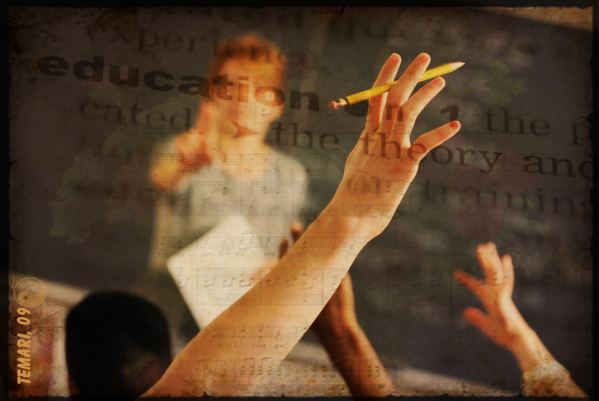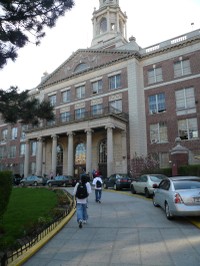Dedicated to relinquishing responsibility for learning to the students
The Texas Social Studies Supervisors Association held its 2008 Spring Conference March 27-28, 2008 at the Hilton Austin Airport. I gave the keynote address on the 28th. Participants requested that I post a PDF download of my notes. Here it is – Keynote.pdf 2.5MB pdf Other conference sessions included content and strategies designed to:

2007 wraps up with a week long series of workshops at Lakeland High School in White Lake, Michigan. On Monday, I’ll do an opening session on rigor, relevance and literacy strategies in the content area for the entire high school faculty. But it doesn’t stop there.
On Tuesday, I’ll guide a group of about 15 teachers in classroom walk–through training. They will form a peer support group to assist teachers in reflecting on their instructional practice. Wednesday, I work with the Lakeland ninth grade team designing interdisciplinary approaches to integrating the themes across the curriculum. On Thursday and Friday, I work with selected departments to assist them in developing lessons in their disciplines. In addition, I’ll be giving an evening presentation for parents, school board and community. They need to have an understanding of new perspectives in teaching and learning.
I have to congratulate school principal, Bob Behnke, on his comprehensive approach to supporting his teachers. He’s leveraging one professional development day and a rotating pool of subs to give his faculty a variety of settings to reflect on instructional practice and develop new approaches.
The week proved to be a very rewarding opportunity for me to work with a creative group of teachers in workshops and walk-through sessions. Here’s some of the follow up emails I’ve received from teachers at Lakeland –
Peter,
It was a pleasure to meet with you today. Thank you for conducting the inservice in a way that was engaging. It was a special treat to attend an inservice for something that will definitely benefit me, my students, and our school community. Too often we are asked to attend workshops that have great ideas and, I’m sure, the best intentions, but they fall short. I really appreciated having the opportunity to discuss freely the state of education, identify areas where we can apply rigor and relevance in our classrooms, and time to work with my peers. Walking out of the inservice with materials, resources and ideas I can implement tomorrow is icing on the cake.
Thank you!
Brigid————-
Peter,
I wanted to thank you again for the work you did this past week at Lakeland. I know that the vast majority of the faculty found your information useful and several informed me that they had already incorporated some of the rigor and relevancy into their lesson plans. This shows me their willingness to realize that they can improve the way they teach to really reach students at a higher level. This would not have happened if you had not put a mirror to their faces and let them know that they are good teachers who could be doing more.
Sincerely,
Marc—————
Peter –
I just wanted to thank you for spending a week in our building, and in particular for the work you did with us on Wednesday regarding the 9th grade teams. So often our professional development is mostly talk with very little time for application, but I truly appreciated the resources, ideas, and opportunity for professional discussion that your session provided for us. I particularly loved the digital book idea. In fact, I’m planning to implement it right away in my current unit.
Thanks again, and take care,
Maggie
Image credit: flickr/Temari 09
In May of this year I ran a two-day workshop for the social studies department at New York City’s High School for International Business and Finance. We focused on rigor and relevance and explored a variety of strategies that enable the student to “do the work of the historian.” More
I was pleased to see the school profiled on the front page of today’s New York Times “The High School Kinship of Cristal and Queen.” PDF version: Download Cristal-Queen.pdf
The feature dealt with the struggles and accomplishments of two recent graduates.
"By the time Cristal and Queen were freshmen, their math and reading skills were well below grade level, and school administrators considered them 'at risk': at risk of failing and dropping out. The high school, with graduation rates higher than the citywide average, turned out to be a place where they discovered talents and aspirations they never knew they had. 'They turned on the switch,' Cristal said. 'It’s like my brain opened up.' ”
Cristal reminds us of the importance of the “three R’s” – rigor, relevance and relationships. Students need a rigorous program with challenging goals and effective feedback. A focus on relevance helps students to better understand themselves as learners and measure progress towards their goals. But most critical, are supportive relationships with educators who can provide the scaffolding that students need to take responsibility for their learning.
I’m grateful to have had the chance to meet the teachers, administrators and support staff that make the New York City’s High School for International Business and Finance an effective small learning community. Read the NY Times article and view the audio slide show “The Kinship of Cristal and Queen.”. … See for yourself.
 Last week I had the opportunity to spend two days working with the social studies department of New York City’s High School for International Business and Finance. The school is housed in the historic George Washington High School in the Washington Heights neighborhood of upper Manhattan. GWHS was once a premier high school in NYC, but it spent most of the 1990’s on the NYS SURR list of failing schools. Since then, it has undergone a positive transformation.
Last week I had the opportunity to spend two days working with the social studies department of New York City’s High School for International Business and Finance. The school is housed in the historic George Washington High School in the Washington Heights neighborhood of upper Manhattan. GWHS was once a premier high school in NYC, but it spent most of the 1990’s on the NYS SURR list of failing schools. Since then, it has undergone a positive transformation.
The High School for International Business and Finance is one of four small, themed academies that has resided in the GWHS building since 2000. It is an example of what happens when administrators and teachers share a vision of instruction based on high expectations, responsibility and personalized approach for each student. Located in the center of the city’s largest Dominican neighborhood, 750-student school and it’s partner academies are a focus community pride and accomplishment. Student achievement is on the rise and the High School for International Business and Finance now has a large surplus of applicants for its freshman class.
Our two-day workshop focused on rigor and relevance in social studies and our team of teachers explored a variety of strategies that enable the student to “do the work of the historian.” We modeled that approach throughout the sessions – as one teacher noted, “I liked that while we were given examples, you let create our own learning.”
For more on schools with a “shared a vision of instruction” visit my website Small Learning Communities that Work.